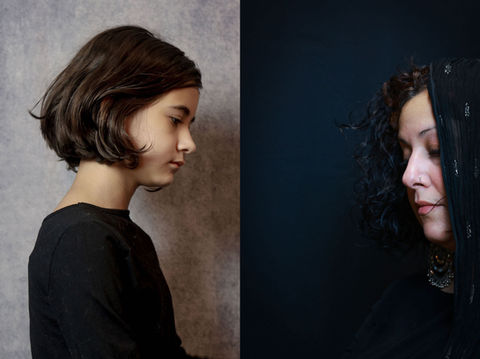
PICTORIAL STORY
March 2, 2024
IN THE FOOTSTEPS OF ANSEL ADAMS
A BLACK AND WHITE LANDSCAPE PHOTOGRAPHY PROJECT
Photography and story by Karin Svadlenak Gomez
Introduction by Melanie Meggs
In following the footsteps of the masterful Ansel Adams, Karin Svadlenak Gomez not only paid homage to his timeless work but also embarked on a transformative journey. Her project in the Dolomites stands as a testament to the enduring power of black and white photography and the emotional depth it can convey. Through her endeavours, Karin has not only deepened her own understanding of the craft but also offered a contemporary homage that resonates with the timeless beauty Ansel Adams captured.
A public relations manager for a university department in Vienna, Austria, a world traveller, and passionate magazine editor and blogger, Karin combines an insatiable curiosity for art, culture, and photography with a love for storytelling.
Karin’s photography project serves as a compelling reminder that the art of photography is not merely in the act of capturing an image, but in the meticulous process of creating a visual narrative that speaks to the soul. Just as Ansel Adams believed, a photograph is indeed made, not taken. Karin’s journey reminds us all to look beyond the surface, to study the play of light and shadow, and to find inspiration in the legacy left by the masters of our past.
Through her photography and writing, Karin continues to be inspired by Ansel Adams and his legacy. She, like many others, recognises him as the Master of Landscape Photography and is grateful for the opportunity to honour his work through her own.
“You don't take a photograph, you make it.”
Ansel Adams
-min.jpg)
I started landscape photography at a young age. At that time, I was shooting with a Minolta XG 2, a high school graduation gift, and on trips I would look for deserted landscapes for my compositions. One day, I came across a book of Ansel Adams’ photographs in a bookstore and was deeply impressed by his dramatic black and white images.
Ansel Adams is considered one of the most important photographers of the 20th century. His landscape photographs of the American West, beginning with his photos of Yosemite National Park in the 1930s, are world famous. Adams used the elements of composition, such as lines, shapes, light and shadow, for his high-contrast black and white photography. These were not snapshots; he went out with a large format camera on a tripod and would wait patiently for the right light and compose his images very carefully. He also developed his ‘Zone System’, a photographic technique used to achieve optimal exposure and development in black and white photography. It’s essentially a system for understanding and controlling the tonal range of your image. The system divides the tonal range of an image into eleven zones, numbered 0 to 10. Zone 0 represents pure black, zone 5 represents middle gray, and zone 10 represents pure white. The system was developed for film photography, where exposure has to be handled a little differently from digital photography (exposing for the shadows rather than the highlights for the most part). But some of it was also done in post processing. The development process further affects the final tonal range. When one is not familiar with film photography, one might think that analog photographers did not have a lot of editing possibilities. This is true if you have your photos printed in a lab. But if you develop your own negatives and prints, you could actually do quite a lot. By adjusting the development time for both, you can influence the contrast and density of your negatives, you can highlight certain areas of an image and darken others, further refining the tonal relationships within your image. Knowing this, I did not feel apprehensive about using dodge and burn on my digital images to achieve the desired effect, even when I digitalise analog photographs.
For my “homage” project, I had the opportunity to photograph (with an Olympus EM10 Mark III) the beautiful mountain landscape in the Dolomites. The Alpine landscape that I photographed was particularly suited to black and white images, because I was also primarily interested in the dramatic shapes and lighting conditions that I found there. The atmospheric conditions that day were perfect, lots of fog and clouds, but also later blue skies and a lot of good light for contrasty images. Although I originally shot the images in colour, for this homage to Ansel Adams I tried to edit them in his style: high contrast, with a lot of dodging and burning (in my case digitally), and of course in black and white. Ansel preferred black and white even when colour photography became popular. The contrasts between light and shadow underline the drama and intensity of his images.
I undertook this project for a final exam presentation at the Prager Photo School for Artistic and Applied Photography in Linz, Austria. I completed a two-year training program there in December 2023. One of the elective modules was Landscape Photography, so this was it.
This project was a great learning experience for me. While I was familiar with Ansel’s photography, for this project I looked at many photographs more closely and learned a lot about his photography style. I am very happy with the results of this project, and I am grateful for the opportunity to have it highlighted.

As we reflect on Karin’s evocative images, we are reminded of the profound impact a single photographer can have on generations to come. The ability to see beyond colour, to manipulate light and shadow, and to harness the raw beauty of nature in a frame, is a skill that Adams mastered, and Karin has respectfully emulated. Her work encourages us all to explore the world with fresh eyes and to appreciate the intricate balance between technique and vision.
In the spirit of Adams’ wise words, Karin has not merely taken photographs; she has made art. May her dedication inspire others to pick up their cameras, to study the Masters, and to create with passion. For in the dance of light across the film—or the pixels on a sensor—we are all bound in the pursuit of capturing the sublime, and in doing so, honouring the Masters upon whose shoulders we stand.

The views, thoughts, and opinions expressed in the text belong solely to the author/s, and are not necessarily shared by The Pictorial List and the team.




























